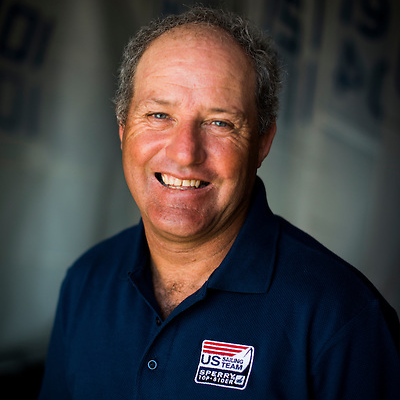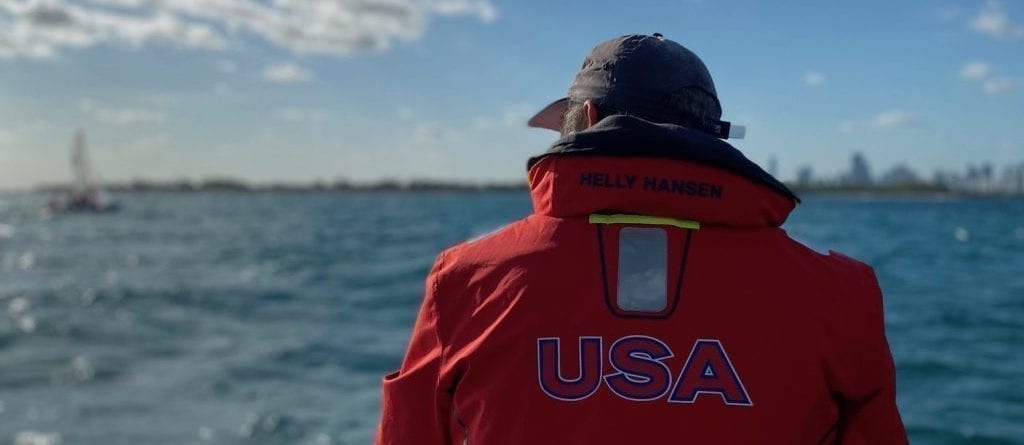One design coaching basics with Fuzz
Grant Spanhake, better known in the sailing world by his monoker “Fuzz”, started his career as a sailmaker in New Zealand and participated in the Whitbread in 1985/86. He is a veteran of six America’s Cups and four Round-the-World Races and has moved his knowledge to the olympic world since 2004. He is currently based in Annapolis, MD and works with the US Sailing Olympic Development Program, Etchells and J70 owners. You can find Fuzz on his website gsyachting.com.

“Fuzz” is a very respected coach and one of the first users of ChartedSails. I sat down with him recently to discuss the basics of one-design sailing and coaching.
Thomas - ChartedSails: I know you coach a lot of Etchells and J70s. Can you tell me what are the first things you focus on when you start working with a new boat?
The basics are always the same and as coaches we end up spending most of our time working on sail trim, heel angle and sailing the boat properly.
With sail trim, you need to become familiar with different twists of the mainsail and learn to recognize the difference between a medium twist, tight twist and ease twist. This is most easily seen from a coaching boat and with photos or videos. Even by yourself, you can take pictures and associate them to different marks on the main sheet to learn what twist you get from each setting (Thomas: for help analyzing sail pictures, check out thesailcloud.com.). If you can practice with another boat, have one boat stay consistent and the other boat change trim. This is the most effective way to learn and see the impact of different settings.
When it comes to heel angle you always want to keep the boat as flat as possible. While we are on the subject of crew weight, you can also play with fore and aft trim: have the crew move around the boat. More than bow up or bow down, you are looking for the least disturbance in the water behind the transom.
Sail trim and heel angle come together to make sure that you are sailing the boat properly for the mode that you are trying to sail in.
Thomas - ChartedSails: I have heard you mention modes a lot. What are the most common sailing modes and when should we use them?
There are three basic sailing modes that you need to be comfortable with when racing. You need to practice them so you can quickly switch to one and sail it effectively.
The first mode is high mode where you are trying to sail as high as possible. You would use this on the start to identify an open lane and take it. This is also useful if you are below someone and need to give them some room to tack. In this mode the telltales are not flat, they are typically flying up 45º to 60º.
The second mode is VMG mode. That is where you are trying to go as fast as possible towards the next mark. This is your default mode.
And finally there is fast mode. You would use this after tacking on top of someone to lock them in position or to quickly switch from one side of the course to the other side. In this mode you are sailing a bit lower, your VMG is not as good but your boat speed is the highest.
Thomas - ChartedSails: What should people look at in their sailing tracks?
The GPS track gives you a chance to measure your speed, your sailing angles and your VMG (In ChartedSails, just bring your mouse over the track to get that information). Except when you have a specific tactical goal you should be sailing in your best VMG mode. Look at your VMG leg by leg, your sailing angles and verify that you were sailing best VMG. If you can collect data from different boats this will become even more obvious.
Thomas - ChartedSails: And what else would you look at?
There is so much to look at! The tools are here and the first thing is to use them. After modes I would look at some tactical decisions:
- Did you pick the right side of the gates after the first downwind leg? How did you execute this turn? For this, I would recommend looking at videos too because your track will not show you what the other boats were doing.
- Did you decide to attack or defend in the second beat? Is this reflected in the data?
- If you chose to switch sides, did you effectively sail fast mode from one side to the other? How much height did you lose in the process?
And really, as much as possible, ask yourself, the driver, the trimmer: what were we trying to do? Did we actually do this? These questions will help you progress a lot, and the sooner you do it after sailing, the more effective the debriefing will be.
Thomas - ChartedSails: Thanks a lot “Fuzz”! If you have questions for “Fuzz”, head over to his website at gsyachting.com.




